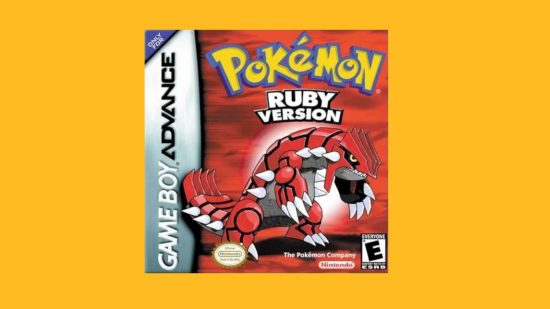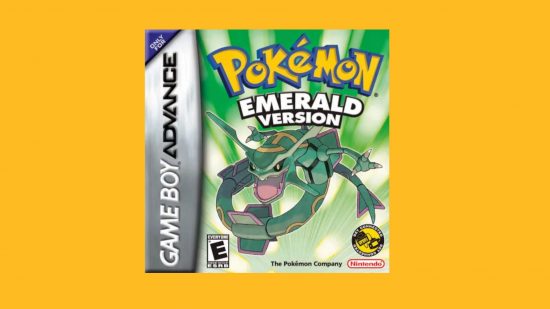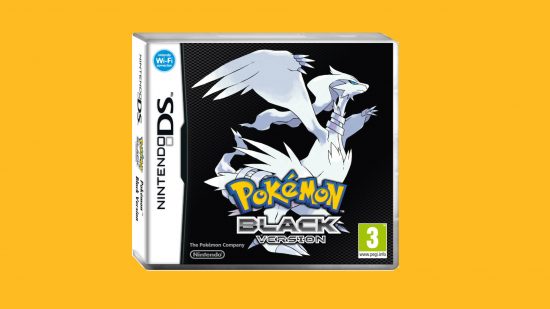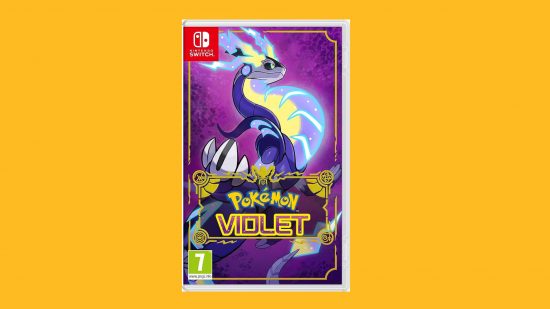With nine generations to explore, it can be hard to know if you need to play all of the Pokémon games in order. Whether you’re a long-time fan or have wide eyes like a freshly hatched Togepi, we’re here to lay out both the chronological order and release order of the entire main franchise so you know which game to start with.
We’re massive Pokéfans here at Pocket Tactics, so we’re full of opinions on the best starter Pokémon, mythical Pokémon, flower Pokémon, fish Pokémon, big Pokémon, small Pokémon, and bear Pokémon, to name a few.
Let’s explore the vast world of Pokémon by traveling through all of the Pokémon games in order.
- Release order
- pokemon red blue
- pokemon yellow
- pokemon gold silver
- pokemon crystal
- pokemon ruby sapphire
- pokemon emerald
- pokemon diamond pearl
- pokemon platinum
- pokemon black white
- pokemon black white 2
- pokemon x y
- pokemon sun moon
- pokemon ultra sun ultra moon
- pokemon sword shield
- pokemon legends arceus
- pokemon scarlet violet
- Chronological order
All Pokémon games in release order
Here are all of the main series Pokémon games in order of release, not including remakes. Pokémon’s canonical timeline is fairly loose, but the release order isn’t exactly the same as the series’ chronological order.
- Pokémon Red and Blue – September 28, 1998
- Pokémon Yellow – October 19, 1999
- Pokémon Gold and Silver – October 15, 2000
- Pokémon Crystal – July 29, 2001
- Pokémon Ruby and Sapphire – March 19, 2003
- Pokémon Emerald – May 1, 2005
- Pokémon Diamond and Pearl – April 22, 2007
- Pokémon Platinum – March 22, 2009
- Pokémon Black and White – March 6, 2011
- Pokémon Black 2 and White 2 – October 7, 2012
- Pokémon X and Y – October 12, 2013
- Pokémon Sun and Moon – November 18, 2016
- Pokémon Ultra Sun and Ultra Moon – November 17, 2017
- Pokémon Sword and Shield – November 15, 2019
- Pokémon Legends: Arceus – January 28, 2022
- Pokémon Scarlet and Violet – November 18, 2022

Pokémon Red and Blue
Initial US release: September 28, 1998 (Game Boy)
These are the games that spawned a media empire. Pokémon Red and Pokémon Blue, released as Red and Green in Japan, are the first pair of games in the Pokémon franchise. Game Freak developed this adorable monster-collecting RPG for the original Game Boy where you play as a young boy about to set out on his first journey across the Kanto region, where he battles gym leaders and the Elite Four and also stops the criminal organization Team Rocket.
Ever since this initial release, the main series Pokémon games have come out in pairs. Each version also has exclusive Pokémon to encourage you to trade with your friends to catch ‘em all. Back in the day, this involved physically meeting up with your pals to exchange ‘mons via a link cable, but thanks to the internet, Pokémon trading has gotten a whole lot easier in recent years.
The Pokémon Company has remade Red and Blue not once, but twice throughout the years: first with Pokémon FireRed and LeafGreen for the Game Boy Advance in 2004 and then with Pokémon Let’s Go Eevee and Pikachu for the Nintendo Switch in 2018. Pokémon Let’s Go even incorporates motion-based catching mechanics, playing off the global success of Pokémon Go.

Pokémon Yellow
Initial US release: October 19, 1999 (Game Boy Color)
Pokémon Yellow was the first of the ‘retelling games’ – Pokémon games that typically come after a main series release like Red and Blue and tell a slightly altered version of those games’ story. In Yellow’s case, this version of the original journey through Kanto mimics many aspects of the ever-popular Pokémon anime.
Instead of the standard three starter Pokémon, your character’s partner is a Pikachu, just like Ash’s Pikachu from the show. Your little electric Pokémon follows behind you in the overworld and your relationship with it changes based on how well you treat it. Classic anime duo Jessie and James also make an appearance as part of Team Rocket and the whole game has slightly upgraded graphics compared to the original.

Pokémon Gold and Silver
Initial US release: October 15, 2000 (Game Boy Color)
Generation two introduces us to a second region and 100 new Pokémon to encounter. Gold and Silver (or their remakes HeartGold and SoulSilver for the Nintendo DS) are a lot of people’s favorite Pokémon games. Whether that’s due to its compelling plot, suite of improved features, or just pure nostalgia, generation two is up there with the best of them.
Much like in Red and Blue, you play as a young boy setting off on a Pokémon journey, this time across Johto, fighting powerful trainers along the way and re-encountering Team Rocket as they search for their leader, Giovanni. As well as this version’s enhanced graphics for the Game Boy Color, Gold and Silver added a bunch of features that are now considered Pokémon game staples. I’m talking about held items, specialized Poké balls, the Pokégear, shinies, special attack and defense, and breeding. Pokémon would look a whole lot different today without any one of these features. Thanks, Johto!

Pokémon Crystal
Initial US release: July 29, 2001 (Game Boy Color)
Finally, Game Freak acknowledged that not just boys play Pokémon with the release of Pokémon Crystal, the first game in the series to let you choose your character’s gender. Crystal is the third game in generation two and it serves a similar purpose to Yellow in that it’s a retelling game. The plot is practically unchanged from Gold and Silver except for the addition of some sub-plots focusing on Suicune and Unown.
Crystal also featured animated sprites for the first time, which wouldn’t come back until Emerald’s release four years later. The main notable addition to the game is the Battle Tower, a building where you can take part in a series of Pokémon battles to prove yourself.

Pokémon Ruby and Sapphire
Initial US release: March 19, 2003 (Game Boy Advance)
Enter Hoenn and its harmonious horns. I’ll admit, generation three has a special place in my heart as both my first and favorite Pokémon generation, but I’m definitely not alone in that opinion. I mean, these games introduced us to both Torchic and Gardevoir, two of the best Pokémon ever! Nintendo also remade these games for the Nintendo 3DS as Pokémon Omega Ruby and Alpha Sapphire.
Ruby and Sapphire play out much the same as previous generations do in terms of main plot, but this generation introduces two new baddies – Team Magma and Team Aqua. Both of these gangs want to use the legendary Pokémon Groudon and Kyogre to alter the climate and land mass of Hoenn, either by causing drought to create more land or flooding the place to create larger oceans. You’ve got to give Game Freak credit for tackling a climate change storyline so early.

Pokémon Emerald
Initial US release: May 1, 2005 (Game Boy Advance)
Pokémon Emerald is my personal favorite game in the entire franchise and was also the very first Pokémon game I ever played. Emerald came out two years after Ruby and Sapphire and is once again a retelling game. In my (and a lot of other people’s) opinion, Emerald is the optimal way to experience generation three as you take on both Teams Magma and Aqua and get to meet the super awesome sky dragon Rayquaza.
There are some slight plot changes that you might appreciate more if you’ve played both Ruby/Sapphire and Emerald, specifically relating to Wallace, but otherwise Pokémon Emerald has everything you need from generation three.

Pokémon Diamond and Pearl
Initial US release: April 22, 2007 (Nintendo DS)
Pokémon lands on the DS, a whole extra screen of fun! I distinctly remember getting my copy of Pokémon Diamond as a birthday present alongside my white DS Lite for my tenth birthday. Generation four takes our protagonist to the Sinnoh region which is loosely based on Japan’s northern island Hokkaido, characterized by its colder climate and snowy mountains.
As well as doing all the usual Pokémon things of battling trainers, catching new ‘mons, and earning gym badges, you must also defeat Team Galactic who… let me check my notes… plan to create an entirely new universe for themselves and destroy the current one by controlling the time and space Pokémon Dialga and Palkia. Game Freak really stepped up the threat level for this one. The DS’s Wi-Fi network also let you trade with and battle players from around the world, rather than just those around you with link cables.

Pokémon Platinum
Initial US release: March 22, 2009 (Nintendo DS)
You know how this goes by now. Pokémon Platinum is a retelling of Diamond and Pearl that focuses on Giratina much more heavily than Dialga and Palkia. It’s also the first Pokémon game to give you multiple chances to catch the box art legendary. As someone who didn’t catch Dialga in their Diamond playthrough and has regret it ever since, I really appreciate this.
Platinum’s main addition alongside the plot tweaks is the Distortion World, an area with strange physics compared to the rest of Sinnoh that gives the game a spooky feel. It’s also a lot easier to catch Pokémon from older generations in Platinum as you don’t have to wait until you’ve beaten Cynthia to find them.

Pokémon Black and White
Initial US release: March 6, 2011 (Nintendo DS)
Pokémon Black and White brought us the first region not based on an area of Japan. Generation five’s Unova region is based on New York City, filled with skyscrapers and suspension bridges. This version also added the most new Pokémon since the original 151, which some people think was a bad idea given the… wackiness of some Unovan Pokémon like Klink, Throh, and Musharna.
As usual, a criminal organization known as Team Plasma is up to no good as you travel across the Unova region. Their leader, N, just wants Pokémon and humans to live in harmony, but there’s someone else pulling the strings from behind the curtain.

Pokémon Black 2 and White 2
Initial US release: October 7, 2012 (Nintendo DS)
In a series first, Pokémon Black 2 and White 2 aren’t simply retellings of the original generation five games, but direct sequels. This story takes place two years after the events of Black and White, featuring new protagonists, locations, and added features like the Pokémon World Tournament.
Ghetsis is back alongside Colress as part of Team Neo Plasma, a branch of Team Plasma that formed after the end of the first game. The plot focuses on the legendary Unova dragon, which is said to be a fusion of the original legendaries Zekrom and Reshiram, as well as a third dragon called Kyurem.

Pokémon X and Y
Initial US release: October 12, 2013 (Nintendo 3DS)
Nintendo was really trying something new with the 3DS, so the Pokémon Company did the same with the release of X and Y, the sixth generation of the franchise. Generally, Pokémon fans don’t look back on the Kalos region with much fondness, but it wasn’t all bad!
X and Y did bring us a brand-new type of Pokémon in the fairy type, as well as a new Eeveelution that was an instant success. We also got to experience mega evolutions of some of our favorite ‘mons and laugh in the face of ice puzzles thanks to the eight-way direction grid.

Pokémon Sun and Moon
Initial US release: November 18, 2016 (Nintendo 3DS)
Still on the 3DS, Pokémon Sun and Moon takes place in the Alola region, a series of islands based on Hawai’i. These games also introduced a bunch of experimental features, some of which have remained popular like regional Pokémon, and others that weren’t so hot like Z moves.
Sun and Moon are often the games that people point to when they talk about the downfall of Pokémon villains. Typically the teams you fight to take down alongside the main plot of a Pokémon game have pretty nefarious ambitions, but Alola’s Team Skull is more akin to a gang of petty thieves united by their losses in the island challenges.

Pokémon Ultra Sun and Ultra Moon
Initial US release: November 17, 2017 (Nintendo 3DS)
The retellings are back! Ultra Sun and Ultra Moon are the first pair of Pokémon retelling games, adding new legendary forms of Solgaleo and Lunala, more Ultra Beasts, and a bunch of post-game content.
The post-game is probably the biggest selling point of Ultra Sun and Ultra Moon as it brings back a plethora of team leaders from previous generations as part of Team Rainbow Rocket, including Giovanni and Mewtwo.

Pokémon Sword and Shield
Initial US release: November 15, 2019 (Nintendo Switch)
As Nintendo combined handheld and home console gaming with the Nintendo Switch, it was time for the Pokémon main series games to migrate away from the handheld-only world with Pokémon Sword and Shield. While the main plot of this generation is pretty bland (and we get another ‘not really a threat’ rival team in Team Yell), it represents Game Freak’s first foray into what an open-world Pokémon game might look like.
Pokémon Sword and Shield was also the first game to receive DLC in The Isle of Armor and The Crown Tundra, which both added new regions, gameplay, and Pokémon to the base game. Make sure you check out our Pokémon Sword and Shield: The Crown Tundra review for more information.

Pokémon Legends: Arceus
Initial US release: January 28, 2022 (Nintendo Switch)
Now this was a surprise. Pokémon Legends: Arceus takes us on a time-traveling isekai adventure as Arceus teleports a modern-day trainer back to ancient Sinnoh, then known as Hisui. At this time, people and Pokémon were terrified of each other, so the main aims of the game are pretty different from the standard Pokémon experience.
Legends: Arceus is one step closer to a fully open-world Pokémon game, with expansive area maps and unique Pokémon mounts to help you traverse difficult terrain. Your main aim is to create the first-ever Pokédex by observing, capturing, and battling the Pokémon of Hisui. I would describe it as the Breath of the Wild of Pokémon games.

Pokémon Scarlet and Violet
Initial US release: November 18, 2022 (Nintendo Switch)
We’ve made it to the present day. Pokémon Scarlet and Violet are the most recent main series games for the Nintendo Switch and we finally got a fully-fledged open-world Pokémon game. Sure, it has its performance issues and doesn’t look the prettiest, but the adventure across Paldea has its merits.
Another major change that Game Freak made for generation nine is the addition of two sub-plots. Not only can you choose the order that you challenge gyms in, but you also get to choose to seek out the five titan Pokémon and take down the five Team Star bases along the way. Scarlet and Violet also have two expansive DLC packs – one exploring the land of Kitakami, and one taking place in the underwater Blueberry Academy in Unova.
All Pokémon games in chronological order
As mentioned above, most of the events of the Pokémon games happen in the same order as release, but there are a couple of exceptions. The Pokémon games in chronological order are as follows:
- Legends: Arceus
- Red, Blue, and Yellow
- Gold, Silver, and Crystal
- Ruby, Sapphire, and Emerald
- Diamond, Pearl, and Platinum
- Black and White
- Black 2 and White 2
- X and Y
- Sun, Moon, Ultra Sun, and Ultra Moon
- Sword and Shield
- Scarlet and Violet
There you have it, all the Pokémon games in order. If you’re eager to jump in and need some help in battle, check out our guides to normal Pokémon weakness, water Pokémon weakness, flying Pokémon weakness, and fire Pokémon weakness. We’ve also taken a look at all the Zelda games in order if you’re after more Nintendo history.
